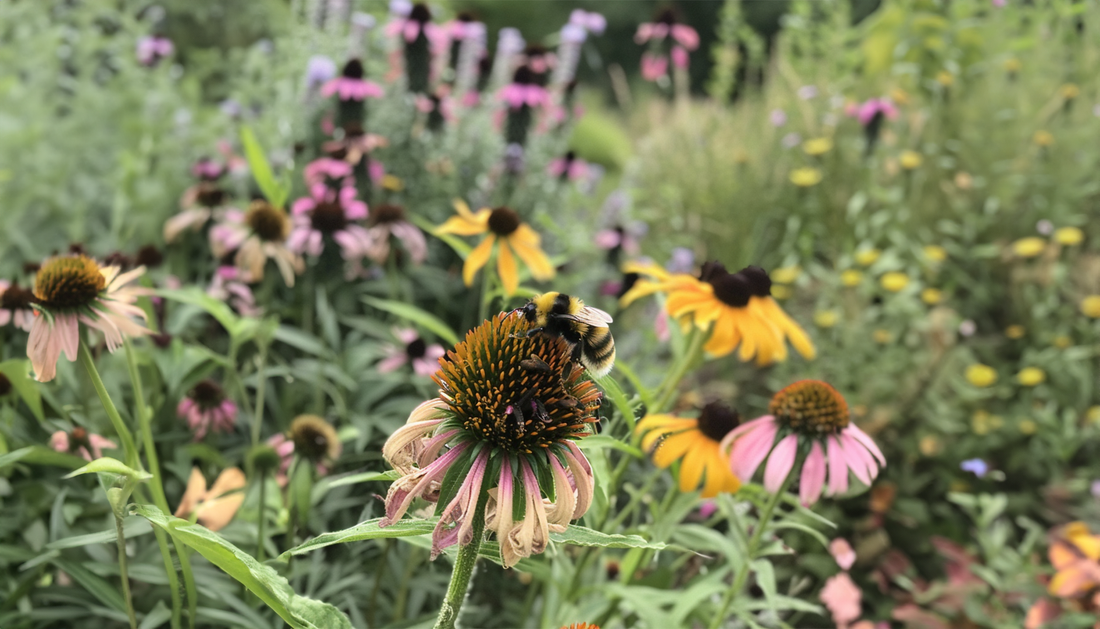
Tips for Cultivating a Pollinator-Friendly Garden
Share
Gardening is more than just growing flowers and vegetables—it's about creating a space that benefits the local environment, including the essential creatures that help our plants thrive. Pollinators, like bees, butterflies, and birds, play a critical role in maintaining healthy ecosystems, and you can help support them by designing your garden with their needs in mind.
In this guide, we'll share practical tips on how to cultivate a pollinator-friendly garden that not only brings beauty to your outdoor space but also contributes to the health of our planet. Whether you're a seasoned gardener or just starting out, these tips will help you create a sanctuary for pollinators in your backyard.
1. Choose Native Plants
One of the easiest and most effective ways to support pollinators is to grow native plants. These plants have evolved alongside local pollinators, providing the perfect source of food, shelter, and breeding sites. Native plants are also well-adapted to your local climate and soil, making them easier to grow and maintain.
Examples of native plants in the Berkshires:
- Bee balm
- Black-eyed Susan
- Wild bergamot
- New England aster
Incorporating a variety of native flowers, shrubs, and trees into your garden will ensure that pollinators have a steady supply of nectar and pollen throughout the growing season.
2. Create a Continuous Bloom Cycle
To keep pollinators happy all season long, try to plant a range of species that bloom at different times. This provides a constant source of food from spring to fall, helping pollinators to thrive during their most active periods.
Plant ideas for continuous blooming:
- Spring: Tulips, daffodils, and crocuses.
- Summer: Lavender, coneflowers, and sunflowers.
- Fall: Goldenrod, asters, and sedum.
By ensuring your garden has something blooming at all times, you’ll attract and support a wide variety of pollinators.
3. Avoid Pesticides and Herbicides
While it can be tempting to use chemical pesticides and herbicides to keep your garden free from pests and weeds, these substances can harm pollinators and other beneficial insects. Instead, consider using natural pest control methods like companion planting, introducing beneficial insects, or manually removing pests.
Natural alternatives to chemicals:
- Ladybugs for aphid control.
- Neem oil as an organic pesticide.
- Companion planting (e.g., planting marigolds to deter harmful insects).
By reducing or eliminating chemical use, you’ll create a safer environment for bees, butterflies, and other helpful garden friends.
4. Provide Water Sources
Pollinators need water to stay hydrated, especially during the hot summer months. You can create a simple water source by placing a shallow dish or birdbath in your garden, filled with fresh water. Adding rocks or marbles to the dish gives bees and butterflies a safe place to land while they drink, preventing them from drowning.
Make sure to change the water regularly to keep it clean and avoid attracting mosquitoes.
5. Leave Some "Wild" Areas in Your Garden
Pollinators need more than just nectar—they also need places to nest, hide, and lay eggs. Leaving some parts of your garden a little "wild" can provide shelter for these creatures. Consider creating a brush pile, leaving some bare soil patches for ground-nesting bees, or letting a few areas of grass grow tall.
A pollinator garden doesn’t need to be perfectly manicured—letting nature take its course in some areas can greatly benefit local wildlife.
6. Add Pollinator Homes
You can also install bee hotels, bat houses, or butterfly houses in your garden to provide even more nesting opportunities for pollinators. These structures offer safe spaces for bees and butterflies to shelter during bad weather, lay eggs, and rest.
Pollinator homes are not only functional but can also add a beautiful and eco-friendly touch to your garden decor.
7. Educate and Share the Joy
One of the most rewarding aspects of creating a pollinator-friendly garden is sharing it with others. Invite friends and family over to enjoy your garden and explain the importance of supporting pollinators. You can even host gardening workshops or seed-swapping events in your community to spread the word about the benefits of pollinator gardens.
Cultivating a Pollinator-Friendly Future
Creating a pollinator-friendly garden is an act of love for nature that pays off in beauty, productivity, and environmental benefits. Every bloom, every patch of bare soil, and every water source you provide contributes to a larger effort to support pollinators and protect our ecosystems.
At Berkshires Boutique, we believe in the power of nature and the importance of sustainable practices. Our garden-friendly products, including UV-blocking shirts designed for long days in the sun, help you stay comfortable and stylish while tending to your garden. Explore our collection and join us in making a positive impact, one garden at a time.
Happy gardening! 🌼🌿
